New Saint Kateri Tekawitha Shrine in New Mexico
St. Kateri Tekakwitha spent her short
life in what is now New York State and Quebec Province, having been
introduced to the Catholic faith by French missionaries. But her name is
being proudly used for a new shrine in New Mexico, where Spanish friars
led many Native Americans to the faith in the 16th and 17th centuries.
The choice of her patronage is not the result of some kind of
cultural ignorance, but due to the fact that St. Kateri is patron saint
of Native Americans. People like Bishop James S. Wall of Gallup, New
Mexico, Carl Anderson of the Knights of Columbus, and William McCarthy
of the Southwest Indian Foundation believe Native Americans can really
use her heavenly intercession right now.
They know they can also use some real practical help as well.
When they thrust shovels into the desert earth outside of Gallup on
Sunday to break ground for a major new American shrine, they knew they
were well on the way to providing both.
Bishop Wall, Anderson, McCarthy, and Fr. Henry Sands, director of the
National Black and Indian Foundation, were joined by tribal
representatives at the ceremony to kick off the new Shrine of St. Kateri
Tekakwitha, to be built on the grounds of the diocesan Sacred Heart
Retreat House. The shrine will feature a larger-than-life Rosary walk.
“This Rosary walk will imitate the example of St. Kateri’s life, and
we will take advantage of the natural beauty that God offers to us, as
the Rosary will wind its way through the beautiful landscape that he’s
already given to us,” Bishop Wall told a gathering at Sunday’s
groundbreaking. “We will rely on the intercession of Our Lady, under the
title of Our Lady of Guadalupe, who we know first appeared to an
Indigenous person, that being St. Juan Diego. And so this shrine will be
a special place for everyone, but especially to the indigenous people
of this land, the Native American peoples of this land.”
The project was announced at the Knights of Columbus Supreme Convention in Minneapolis last week.
“Some indigenous peoples of North America embraced the Catholic faith
long before many of our ancestors set foot on these shores,” Anderson
said. “Today, in the United States, as many as one in four Native
Americans are Catholic. And yet, in many ways, these brothers and
sisters in the faith have been forgotten. … Despite many hardships,
neglect, and a history of brutality toward them, still they hold fast to
our Catholic faith.”
Anderson said the Knights hope that in the years to come the St.
Kateri Shrine will become a “national spiritual home for Native
Americans and for all Catholics in North America.”
“They’re trying to do two things: evangelize the Native Americans
through the intercession of St. Kateri and her example, and they’ve been
trying to … get the attention of people to understand the needs of
folks out there,” said Erik Bootsma, the architect on the project.
Native peoples in the southwest, on balance, live below the poverty
level, McCarthy said in an interview, emphasizing that Gallup is the
poorest diocese in the United States, “and the vast majority of those
who live in the diocese are Native Americans.”
“The per capita income of the Navajo tribe, which is the largest
tribe by far in our area, is under $10,000 per capita,” he said.
“Massive unemployment, and then the people live in dwellings without
running water, electricity, dirt floors. It’s a third world country,
within the continental borders of the United States.”
To help alleviate that poverty, the Southwest Indian Foundation
builds about 20 homes a year and installs cooking and heating stoves;
provides scholarships for lower income, needy Native American children
so they can go to parochial schools; runs homes for women and children
who are victims of domestic violence, and provides alcohol counseling
and emergency assistance in the areas of food, clothing, heating fuel,
and temporary shelter.
It also provides a national outlet for Native
Americans to sell handmade goods. Profits go directly back to Native
Americans themselves in the form of philanthropic programs.
The Rosary walk will consist of 23 small shrines, 20 of them for the
different mysteries of the Rosary. “There’s a small shrine to Our Lady
of Guadalupe, which is kind of a little link of the Rosary, then four
different [groups of mysteries],” Bootsma explained in an interview.
“Each decade has its own little shrine, and they’re all kind of using
these little traditional niches or shrines that you’d find all over the
place around Mexico on churches, etc.”
It was Spanish missionaries from Mexico who first preached the Gospel
in the area, not long after the apparitions of Our Lady of Guadalupe in
Mexico City in 1531.
He said that native artists and local
artists will be designing each niche, using glazed tile as their
materials. Each niche will cost about $10,000 to build, and the walk is
expected to be completed by August 2021.
“People can come and pray the Rosary every day and take a different path each day,” Bootsma said.
Said Bishop Wall, “My prayer for everyone who visits this—especially
the Native American peoples—is that you come and walk and pray the
Rosary walk, and as you leave the Rosary walk, that your faith might be
strengthened, and your hope might be strengthened in the world to come.”
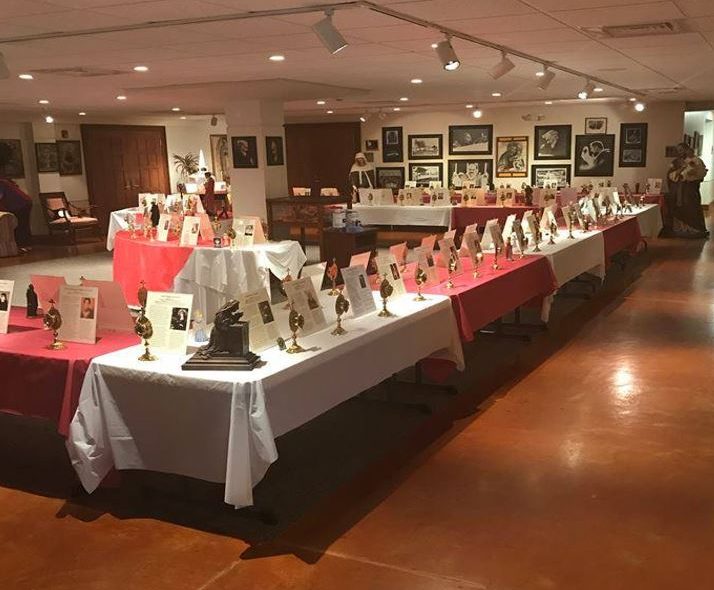

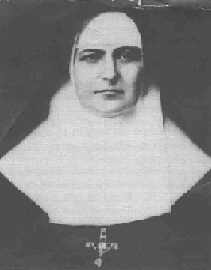
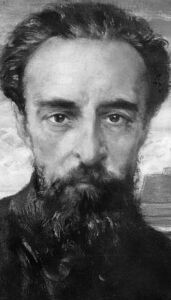
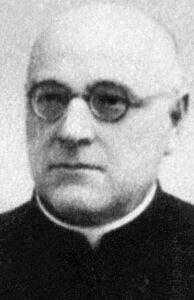 Priest and martyr Father Mykola Konrad
was born on May 16, 1876 in the village of Strusiv, Ternopil District.
He finished his philosophical and theological studies in Rome, where he
defended his doctoral dissertation. In 1899, he was ordained to the
priesthood. He taught in a high school in Berezhany and Terebovlia. In
1929 in Lviv he founded Obnova (Renewal), the first Ukrainian
association of Catholic students.
Priest and martyr Father Mykola Konrad
was born on May 16, 1876 in the village of Strusiv, Ternopil District.
He finished his philosophical and theological studies in Rome, where he
defended his doctoral dissertation. In 1899, he was ordained to the
priesthood. He taught in a high school in Berezhany and Terebovlia. In
1929 in Lviv he founded Obnova (Renewal), the first Ukrainian
association of Catholic students.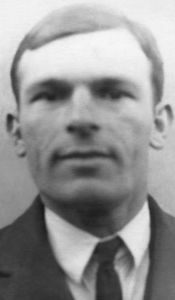 Martyr Volodymyr Pryima
was born on July 17, 1906, in the village of Stradch, Yavoriv District.
After graduating from a school for cantors he became the cantor and
choir director in the local church. He took active part in the life of
his parish. Always and in everything he respected human dignity and
built his life on the principles of the gospel. On June 26, 1941, agents
of the NKVD mercilessly tortured and murdered him along with Father
Mykola Konrad.
Martyr Volodymyr Pryima
was born on July 17, 1906, in the village of Stradch, Yavoriv District.
After graduating from a school for cantors he became the cantor and
choir director in the local church. He took active part in the life of
his parish. Always and in everything he respected human dignity and
built his life on the principles of the gospel. On June 26, 1941, agents
of the NKVD mercilessly tortured and murdered him along with Father
Mykola Konrad.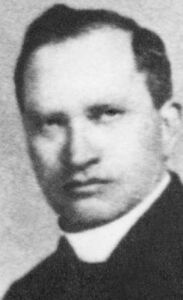 Priest and martyr Father Andrii Ischak
was born on September 20, 1887, in Mykolaiv, in the Lviv District. He
finished his theological studies at the universities in Lviv and
Innsbruck (Austria). In 1914 he received his Ph.D. in theology and was
ordained. Beginning in 1928 he taught dogmatic theology and canon law at
the Lviv Theological Academy.
Priest and martyr Father Andrii Ischak
was born on September 20, 1887, in Mykolaiv, in the Lviv District. He
finished his theological studies at the universities in Lviv and
Innsbruck (Austria). In 1914 he received his Ph.D. in theology and was
ordained. Beginning in 1928 he taught dogmatic theology and canon law at
the Lviv Theological Academy.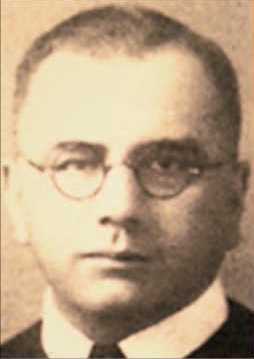
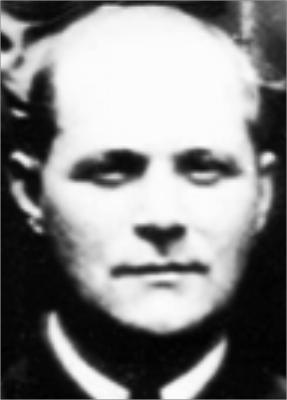
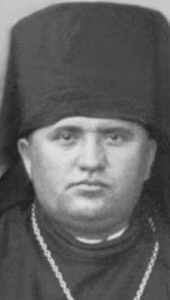
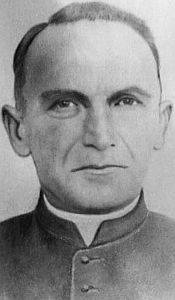 Priest and Martyr Father Emilian Kovch
was born on August 20, 1884, in Kosmach near Kosiv. After graduating
from the College of Ss. Sergius and Bacchus in Rome, he was ordained to
the priesthood in 1911. In 1919 he became field chaplain for the
Ukrainian Galician Army. After the war and until his imprisonment he
conducted his priestly ministry in Przemysl (Peremyshl), at the same
time tending to his parishioners’ social and cultural life. He helped
the poor and orphans, though he had six children of his own.
Priest and Martyr Father Emilian Kovch
was born on August 20, 1884, in Kosmach near Kosiv. After graduating
from the College of Ss. Sergius and Bacchus in Rome, he was ordained to
the priesthood in 1911. In 1919 he became field chaplain for the
Ukrainian Galician Army. After the war and until his imprisonment he
conducted his priestly ministry in Przemysl (Peremyshl), at the same
time tending to his parishioners’ social and cultural life. He helped
the poor and orphans, though he had six children of his own.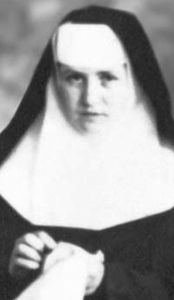 Nun and Martyr Sister Tarsykiya Matskiv
was born on March 23, 1919 in the village of Khodoriv, Lviv District.
On May 3, 1938 she entered the Sisters Servants of Mary Immaculate.
After professing her first vows on November 5, 1940, she worked in the
convent, sewing clothes for the sisters and teaching the skill to
others. Even prior to the Bolshevik arrival in Lviv, Sister Tarsykiya
had made a private oath to her spiritual director, Father Volodymyr
Kovalyk OSBM, that she would sacrifice her life for the conversion of
Russia and for the good of the Catholic Church.
Nun and Martyr Sister Tarsykiya Matskiv
was born on March 23, 1919 in the village of Khodoriv, Lviv District.
On May 3, 1938 she entered the Sisters Servants of Mary Immaculate.
After professing her first vows on November 5, 1940, she worked in the
convent, sewing clothes for the sisters and teaching the skill to
others. Even prior to the Bolshevik arrival in Lviv, Sister Tarsykiya
had made a private oath to her spiritual director, Father Volodymyr
Kovalyk OSBM, that she would sacrifice her life for the conversion of
Russia and for the good of the Catholic Church.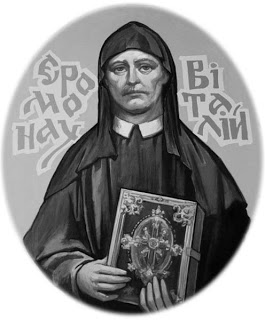
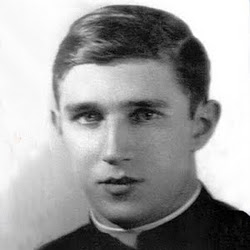 Priest and Martyr Father Roman Lysko
was born on August 14, 1914 in Horodok, Lviv District. He finished his
theological studies at the Lviv Theological Academy. Possessing special
poetic and artistic talents, he and his wife joyfully conducted youth
ministry together. On August 28, 1941 he was ordained to the priesthood
by Metropolitan Andrey Sheptytsky.
Priest and Martyr Father Roman Lysko
was born on August 14, 1914 in Horodok, Lviv District. He finished his
theological studies at the Lviv Theological Academy. Possessing special
poetic and artistic talents, he and his wife joyfully conducted youth
ministry together. On August 28, 1941 he was ordained to the priesthood
by Metropolitan Andrey Sheptytsky.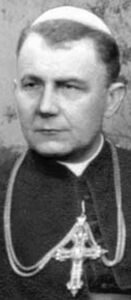 Bishop and Martyr Hryhorii Khomyshyn
was born on March 25, 1867 in the village of Hadynkivtsi, Ternopil
District. After graduating from the Lviv seminary in 1893, he was
ordained to the priesthood. He continued his theological studies in
Vienna (1894-1899), earning a doctorate. In 1902, Metropolitan Andrey
Sheptytsky appointed Father Hryhorii rector of the Seminary in Lviv, and
in 1904 he was ordained bishop of Ivano-Frankivsk.
Bishop and Martyr Hryhorii Khomyshyn
was born on March 25, 1867 in the village of Hadynkivtsi, Ternopil
District. After graduating from the Lviv seminary in 1893, he was
ordained to the priesthood. He continued his theological studies in
Vienna (1894-1899), earning a doctorate. In 1902, Metropolitan Andrey
Sheptytsky appointed Father Hryhorii rector of the Seminary in Lviv, and
in 1904 he was ordained bishop of Ivano-Frankivsk.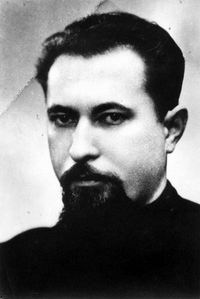 Bishop and Martyr Theodore Romzha
was born on April 14, 1911, in the village of Velykyi Bychkiv,
Zakarpattia to a family of railroad workers. He finished his theological
studies at the Papal Gregorian University in Rome. In 1938 he became
pastor in the mountain villages of Berezevo and Nyzhnii Bystryi outside
of Khust. Beginning with the fall of 1939 he taught philosophy and was
spiritual director at the Uzhorod seminary. On September 24, 1944, soon
after the arrival of the Soviet Army, he was ordained to the episcopacy.
Bishop and Martyr Theodore Romzha
was born on April 14, 1911, in the village of Velykyi Bychkiv,
Zakarpattia to a family of railroad workers. He finished his theological
studies at the Papal Gregorian University in Rome. In 1938 he became
pastor in the mountain villages of Berezevo and Nyzhnii Bystryi outside
of Khust. Beginning with the fall of 1939 he taught philosophy and was
spiritual director at the Uzhorod seminary. On September 24, 1944, soon
after the arrival of the Soviet Army, he was ordained to the episcopacy.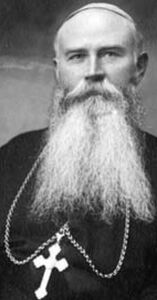 Bishop and Martyr Josaphat Kotsylovsky
was born on March 3, 1876 in the village of Pakoshivka, Lemkiv
District. He graduated with a degree in Theology from Rome in 1907, and
later on October 9 of that year he was ordained to the priesthood. Not
long after that he was appointed vice-rector and professor of Theology
at the Ivano-Frankivsk seminary. In 1911 he entered the novitiate of the
Basilian order. He was ordained a bishop on September 23, 1917 in
Przemysl (Peremyshl) upon the return of Metropolitan Andrey (Sheptytsky)
from captivity in Russia.
Bishop and Martyr Josaphat Kotsylovsky
was born on March 3, 1876 in the village of Pakoshivka, Lemkiv
District. He graduated with a degree in Theology from Rome in 1907, and
later on October 9 of that year he was ordained to the priesthood. Not
long after that he was appointed vice-rector and professor of Theology
at the Ivano-Frankivsk seminary. In 1911 he entered the novitiate of the
Basilian order. He was ordained a bishop on September 23, 1917 in
Przemysl (Peremyshl) upon the return of Metropolitan Andrey (Sheptytsky)
from captivity in Russia.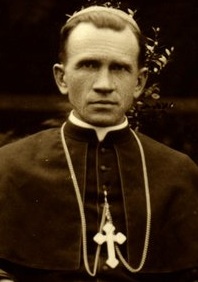 Bishop and martyr Nykyta Budka
was born on June 7, 1877, in the village of Dobomirka, Zbarazh
District. In 1905 after finishing theological studies in Vienna and
Innsbruck he was ordained to the priesthood by Metropolitan Andrey
Sheptytsky. From the very beginning he gave great attention to the
ministry for Ukrainian emigrants. The Holy See appointed him first
bishop for Ukrainian Catholics in Canada in July 1912, and he was
ordained bishop on October 14, 1912. In 1928 he returned to Lviv and
became vicar general of the Metropolitan Curia in Lviv.
Bishop and martyr Nykyta Budka
was born on June 7, 1877, in the village of Dobomirka, Zbarazh
District. In 1905 after finishing theological studies in Vienna and
Innsbruck he was ordained to the priesthood by Metropolitan Andrey
Sheptytsky. From the very beginning he gave great attention to the
ministry for Ukrainian emigrants. The Holy See appointed him first
bishop for Ukrainian Catholics in Canada in July 1912, and he was
ordained bishop on October 14, 1912. In 1928 he returned to Lviv and
became vicar general of the Metropolitan Curia in Lviv.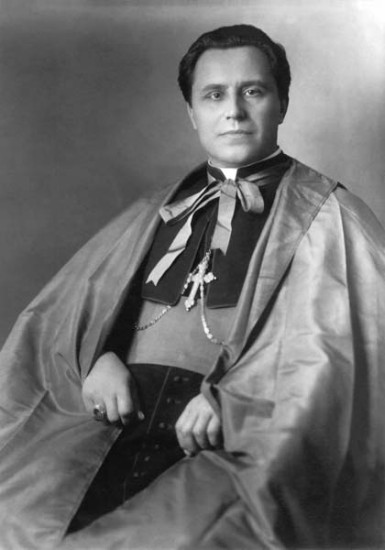
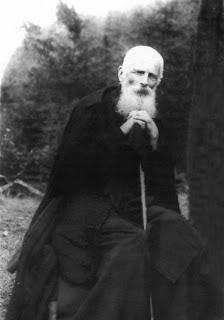 Priest and Martyr Archimandrite Klymentii Sheptytsky,
the younger brother of the Servant of God Metropolitan Andrey
Sheptytsky, was born on November 17, 1869, in the village of Prylbychi,
Yavoriv region. He studied law in Munich and Paris and received a
doctorate at the University of Krakow. He was a legate of the Austrian
Parliament and member of the National Council. In 1912 he entered the
Studite monastery as a late vocation; by so doing he renounced his
successful secular career. He completed his theological studies in
Innsbruck. On August 28, 1915, he was ordained to the priesthood. For
many years he was the hegumen (prior) of the Studite monastery at Univ,
and in 1944 he became the archimandrite (abbot).
Priest and Martyr Archimandrite Klymentii Sheptytsky,
the younger brother of the Servant of God Metropolitan Andrey
Sheptytsky, was born on November 17, 1869, in the village of Prylbychi,
Yavoriv region. He studied law in Munich and Paris and received a
doctorate at the University of Krakow. He was a legate of the Austrian
Parliament and member of the National Council. In 1912 he entered the
Studite monastery as a late vocation; by so doing he renounced his
successful secular career. He completed his theological studies in
Innsbruck. On August 28, 1915, he was ordained to the priesthood. For
many years he was the hegumen (prior) of the Studite monastery at Univ,
and in 1944 he became the archimandrite (abbot).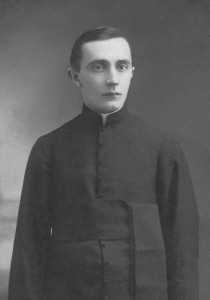 Priest and Martyr Father Mykola Tsehelskyi
was born on December 17, 1896, in the village of Strusiv, Ternopil
District. In 1923 he graduated from the Theological Faculty of Lviv
University. On April 5, 1925, Metropolitan Andrey Sheptytsky ordained
him to the priesthood. He was a zealous priest who cared for the
spirituality, education and welfare of his parishioners.
Priest and Martyr Father Mykola Tsehelskyi
was born on December 17, 1896, in the village of Strusiv, Ternopil
District. In 1923 he graduated from the Theological Faculty of Lviv
University. On April 5, 1925, Metropolitan Andrey Sheptytsky ordained
him to the priesthood. He was a zealous priest who cared for the
spirituality, education and welfare of his parishioners.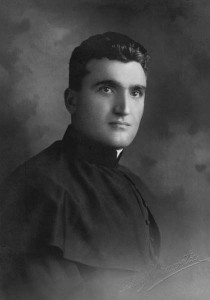 Priest and Martyr Father Ivan Ziatyk
was born on December 26, 1899, in the village of Odrekhiv, near Sianok.
After finishing his theology studies in Przemysl (Peremyshl) seminary
in 1923, he was ordained to the priesthood. In 1935 he entered the
Congregation of the Most Holy Redeemer (Redemptorists). He was a teacher
of dogmatic theology and holy scripture, and also known as a good
administrator. During the Nazi occupation he was acting superior of the
monastery in Ternopil and later in Zboiski near Lviv. After the official
liquidation of the UGCC and the exile of Protohegumen Yosyf de Vokhta,
Father Ivan took on his duties.
Priest and Martyr Father Ivan Ziatyk
was born on December 26, 1899, in the village of Odrekhiv, near Sianok.
After finishing his theology studies in Przemysl (Peremyshl) seminary
in 1923, he was ordained to the priesthood. In 1935 he entered the
Congregation of the Most Holy Redeemer (Redemptorists). He was a teacher
of dogmatic theology and holy scripture, and also known as a good
administrator. During the Nazi occupation he was acting superior of the
monastery in Ternopil and later in Zboiski near Lviv. After the official
liquidation of the UGCC and the exile of Protohegumen Yosyf de Vokhta,
Father Ivan took on his duties.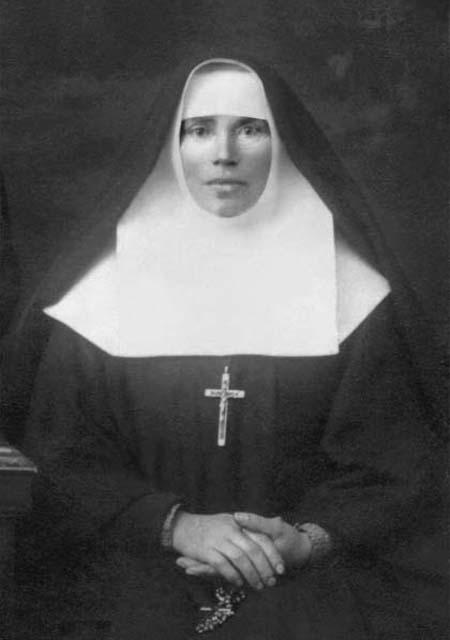 Nun and Martyr Sister Olympia Olha Bida
was born in 1903 in the village of Tsebliv, Lviv District. At a young
age she entered the congregation of the Sisters of St. Joseph. In 1938
she was assigned to the town of Khyriv where she became superior of the
house. After the establishment of the Soviet regime, she and the other
sisters suffered a number of attacks on the convent. She, nevertheless,
continued to care for children, to catechize and organize underground
religious services (often without a priest).
Nun and Martyr Sister Olympia Olha Bida
was born in 1903 in the village of Tsebliv, Lviv District. At a young
age she entered the congregation of the Sisters of St. Joseph. In 1938
she was assigned to the town of Khyriv where she became superior of the
house. After the establishment of the Soviet regime, she and the other
sisters suffered a number of attacks on the convent. She, nevertheless,
continued to care for children, to catechize and organize underground
religious services (often without a priest).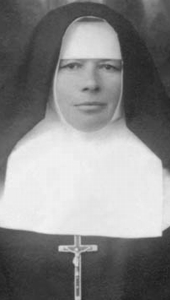 Nun and Martyr Sister Lavrentia Herasymiv
was born on September 31, 1911, in the village of Rudnyky, Lviv
District. In 1931 she entered the congregation of the Sisters of St.
Joseph in Tsebliv. In 1933 she made her first vows. Together with Sister
Olympia, in 1938 she went to the house in Khyriv, and their fates were
crossed until death. In 1950 she was arrested by the agents of the NKVD
and sent to Boryslav.
Nun and Martyr Sister Lavrentia Herasymiv
was born on September 31, 1911, in the village of Rudnyky, Lviv
District. In 1931 she entered the congregation of the Sisters of St.
Joseph in Tsebliv. In 1933 she made her first vows. Together with Sister
Olympia, in 1938 she went to the house in Khyriv, and their fates were
crossed until death. In 1950 she was arrested by the agents of the NKVD
and sent to Boryslav.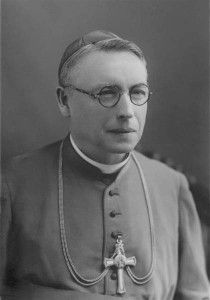 Priest and Martyr Father Petro Verhun
was born on November 18, 1890, in Horodok, Lviv District. He held a
Ph.D. in philosophy. On October 30, 1927, he was ordained to the
priesthood by Metropolitan Andrey Sheptytsky at St. George’s Cathedral
and was appointed to be the pastor and later the apostolic visitator for
Ukrainian Catholics in Germany. Priests and all the faithful, whom fate
had brought to a foreign land, gravitated to Father Verhun because they
felt he was a good shepherd who would give his life for his sheep.
Priest and Martyr Father Petro Verhun
was born on November 18, 1890, in Horodok, Lviv District. He held a
Ph.D. in philosophy. On October 30, 1927, he was ordained to the
priesthood by Metropolitan Andrey Sheptytsky at St. George’s Cathedral
and was appointed to be the pastor and later the apostolic visitator for
Ukrainian Catholics in Germany. Priests and all the faithful, whom fate
had brought to a foreign land, gravitated to Father Verhun because they
felt he was a good shepherd who would give his life for his sheep.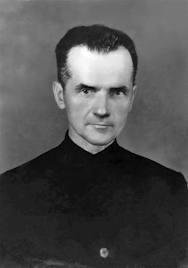 Priest and Martyr Father Oleksii Zarytskyi
was born in 1912 in the village of Bilche, in the Lviv District. From
1931 to 1934 he studied at the Lviv Theological Academy. He was ordained
to the priesthood by Metropolitan Andrey Sheptytsky in 1936. During his
ministry in the village of Strutyna near Zolochiv he gained the special
favour of his parishioners. In 1948 he was sentenced to 10 years’
imprisonment in the camps of Siberia and Kazakstan for refusing to
convert to Orthodoxy.
Priest and Martyr Father Oleksii Zarytskyi
was born in 1912 in the village of Bilche, in the Lviv District. From
1931 to 1934 he studied at the Lviv Theological Academy. He was ordained
to the priesthood by Metropolitan Andrey Sheptytsky in 1936. During his
ministry in the village of Strutyna near Zolochiv he gained the special
favour of his parishioners. In 1948 he was sentenced to 10 years’
imprisonment in the camps of Siberia and Kazakstan for refusing to
convert to Orthodoxy.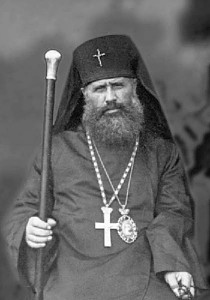 Bishop and Martyr Mykola Charnetskyi
was born on September 14, 1884, in the village of Semakivtsi,
Ivano-Frankivsk District. After he completed his studies at the local
seminary in Rome, he was ordained to the priesthood in 1909. He obtained
his doctorate in dogmatic theology from Rome and became a spiritual
director and professor at the seminary in Ivano-Frankivsk. In 1919 he
entered the novitiate of the Redemptorist Fathers in Lviv, and in 1926
he was appointed apostolic visitator for Ukrainian Catholics in Volyn,
Polissia, Kholm and Pidliashia. A model religious leader and missionary,
he zealously worked for the union of the Holy Church. He was ordained
to the episcopacy by Bishop Hryhorii Khomyshyn in Rome on February 2,
1931.
Bishop and Martyr Mykola Charnetskyi
was born on September 14, 1884, in the village of Semakivtsi,
Ivano-Frankivsk District. After he completed his studies at the local
seminary in Rome, he was ordained to the priesthood in 1909. He obtained
his doctorate in dogmatic theology from Rome and became a spiritual
director and professor at the seminary in Ivano-Frankivsk. In 1919 he
entered the novitiate of the Redemptorist Fathers in Lviv, and in 1926
he was appointed apostolic visitator for Ukrainian Catholics in Volyn,
Polissia, Kholm and Pidliashia. A model religious leader and missionary,
he zealously worked for the union of the Holy Church. He was ordained
to the episcopacy by Bishop Hryhorii Khomyshyn in Rome on February 2,
1931.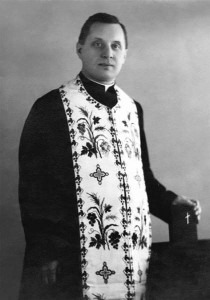 Bishop and Martyr Semeon Lukach
was born on July 7, 1893, in the village of Starunia, Ivano-Frankivsk
District. In 1913 he entered the seminary. He finished the seminary in
Ivano-Frankivsk and was ordained a priest in 1919. In December 1920 he
was appointed professor of moral theology at the seminary where he had
earlier studied. He secretly received episcopal ordination in the spring
of 1945 before the arrest of Bishop Hryhorii Khomyshyn. On October 26,
1949, he was arrested by the Soviet secret police. Sentenced in August
1950 to 10 years of imprisonment, he carried out hard labour in a lumber
camp in Krasnoyarsk. He was freed on February 11, 1955, and returned to
his native land. In July 1962 he was arrested for a second time and was
sentenced to five years in a severe colony. During his interrogations
he showed his unbroken perseverance, discretion and faithfulness to the
Catholic Church. In March 1964 because of his critical condition,
tuberculosis of the lungs, he was taken to his native village, Starunia.
He died a martyr for the faith on August 22, 1964.
Bishop and Martyr Semeon Lukach
was born on July 7, 1893, in the village of Starunia, Ivano-Frankivsk
District. In 1913 he entered the seminary. He finished the seminary in
Ivano-Frankivsk and was ordained a priest in 1919. In December 1920 he
was appointed professor of moral theology at the seminary where he had
earlier studied. He secretly received episcopal ordination in the spring
of 1945 before the arrest of Bishop Hryhorii Khomyshyn. On October 26,
1949, he was arrested by the Soviet secret police. Sentenced in August
1950 to 10 years of imprisonment, he carried out hard labour in a lumber
camp in Krasnoyarsk. He was freed on February 11, 1955, and returned to
his native land. In July 1962 he was arrested for a second time and was
sentenced to five years in a severe colony. During his interrogations
he showed his unbroken perseverance, discretion and faithfulness to the
Catholic Church. In March 1964 because of his critical condition,
tuberculosis of the lungs, he was taken to his native village, Starunia.
He died a martyr for the faith on August 22, 1964.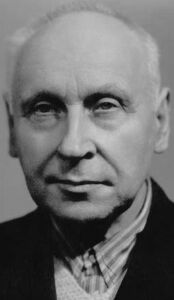 Bishop and Martyr Ivan Sleziuk
was born on January 14, 1896, in the village of Zhyvachiv,
Ivano-Frankivsk District. After graduating from the eparchial seminary
in 1923 he was ordained to the priesthood. He served as a catechist and
spiritual director in Ivano-Frankivsk. In April of 1945 Bishop Hryhory
Khomyshyn secretly ordained him a bishop. On June 2, 1945, Bishop
Sleziuk was arrested, and a year later he was sentenced to 10 years’
imprisonment. He served his sentence in camps in Vorkuta and Mordovia,
Russia. Released from prison, he returned to Ivano-Frankivsk and carried
out the duties of administrator of the eparchy.
Bishop and Martyr Ivan Sleziuk
was born on January 14, 1896, in the village of Zhyvachiv,
Ivano-Frankivsk District. After graduating from the eparchial seminary
in 1923 he was ordained to the priesthood. He served as a catechist and
spiritual director in Ivano-Frankivsk. In April of 1945 Bishop Hryhory
Khomyshyn secretly ordained him a bishop. On June 2, 1945, Bishop
Sleziuk was arrested, and a year later he was sentenced to 10 years’
imprisonment. He served his sentence in camps in Vorkuta and Mordovia,
Russia. Released from prison, he returned to Ivano-Frankivsk and carried
out the duties of administrator of the eparchy.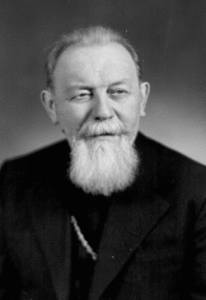 Bishop and Martyr Vasyl Velychkovsky
was born June 1, 1903, in Ivano-Frankivsk. In 1920 he entered the
seminary in Lviv. In 1925 in Holosko, near Lviv, he took his first
religious vows in the Order of the Most Holy Redeemer and was ordained a
priest. Father Vasyl became a missionary in Volyn. In 1942 he became
the hegumen (prior) of the monastery in Ternopil, where he was arrested
in 1945. He was then taken to Kyiv. His death sentence was soon commuted
to 10 years of imprisonment and hard labor. He returned to Lviv in
1955, where he continued his pastoral work.
Bishop and Martyr Vasyl Velychkovsky
was born June 1, 1903, in Ivano-Frankivsk. In 1920 he entered the
seminary in Lviv. In 1925 in Holosko, near Lviv, he took his first
religious vows in the Order of the Most Holy Redeemer and was ordained a
priest. Father Vasyl became a missionary in Volyn. In 1942 he became
the hegumen (prior) of the monastery in Ternopil, where he was arrested
in 1945. He was then taken to Kyiv. His death sentence was soon commuted
to 10 years of imprisonment and hard labor. He returned to Lviv in
1955, where he continued his pastoral work.



















